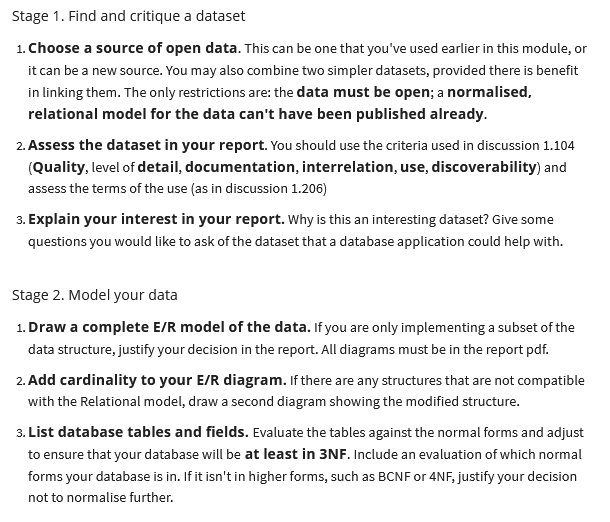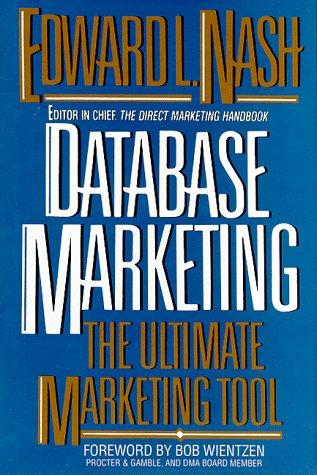
Stage 1. Find and critique a dataset 1. Choose a source of open data. This can be one that you've used earlier in this module, or it can be a new source. You may also combine two simpler datasets, provided there is benefit in linking them. The only restrictions are: the data must be open; a normalised, relational model for the data can't have been published already. 2. Assess the dataset in your report. You should use the criteria used in discussion 1.104 (Quality, level of detail, documentation, interrelation, use, discoverability) and assess the terms of the use (as in discussion 1.206) 3. Explain your interest in your report. Why is this an interesting dataset? Give some questions you would like to ask of the dataset that a database application could help with. Stage 2. Model your data 1. Draw a complete E/R model of the data. If you are only implementing a subset of the data structure, justify your decision in the report. All diagrams must be in the report pdf. 2. Add cardinality to your E/R diagram. If there are any structures that are not compatible with the Relational model, draw a second diagram showing the modified structure. 3. List database tables and fields. Evaluate the tables against the normal forms and adjust to ensure that your database will be at least in 3NF. Include an evaluation of which normal forms your database is in. If it isn't in higher forms, such as BCNF or 4NF, justify your decision not to normalise further. Stage 1. Find and critique a dataset 1. Choose a source of open data. This can be one that you've used earlier in this module, or it can be a new source. You may also combine two simpler datasets, provided there is benefit in linking them. The only restrictions are: the data must be open; a normalised, relational model for the data can't have been published already. 2. Assess the dataset in your report. You should use the criteria used in discussion 1.104 (Quality, level of detail, documentation, interrelation, use, discoverability) and assess the terms of the use (as in discussion 1.206) 3. Explain your interest in your report. Why is this an interesting dataset? Give some questions you would like to ask of the dataset that a database application could help with. Stage 2. Model your data 1. Draw a complete E/R model of the data. If you are only implementing a subset of the data structure, justify your decision in the report. All diagrams must be in the report pdf. 2. Add cardinality to your E/R diagram. If there are any structures that are not compatible with the Relational model, draw a second diagram showing the modified structure. 3. List database tables and fields. Evaluate the tables against the normal forms and adjust to ensure that your database will be at least in 3NF. Include an evaluation of which normal forms your database is in. If it isn't in higher forms, such as BCNF or 4NF, justify your decision not to normalise further







